Table of contents of the article
ToggleCercospora diseases of legumes are among the most serious diseases affecting legumes, causing necrotic spots on leaves and reduced productivity. In this article on your website, World of Plants, we will review effective prevention and control methods.
Symptoms of Cercospora on legumes
Name of the diseaseCercospora diseases (Cercosporiose)
Scientific name: Cercospora beticola Sacc.
Type: innate
Disease family: Mycosphaerellaceae
Old leaves are first infected, then as the disease develops, the infection spreads to newer leaves, and symptoms appear in the form of small circular or oval spots, gray, with dark brown to reddish-purple edges. Then their center becomes fragile and easy to separate, and can fall off, leaving distinct holes in their place. Symptoms of cercospora leaf spot can be distinguished from other leaf spots (alternaria, fumigatus, And bacterial) through the size and shape of the spots, as cercospora spots are usually smaller in size, as well as through the presence of fruiting structures called pseudostromata in the center of the spots. These structures can be easily viewed with a regular magnifying glass (10 x), so they appear in the form of black dots, and in humid weather It is covered with gray or blue-gray fuzz as a result of the formation of fungal spores on it.
As the disease progresses, severely affected leaves become yellow, and the spots can coalesce to form large areas of dead tissue. Severe infection causes leaves to wilt and die. The plant turns to vegetative growth to replace the dead leaves instead of root growth and storing sugar, so the stem elongates to bear a bunch of new apical leaves, which in turn are soon infected. Therefore, the roots of infected plants are characterized by elongated petioles as a result of the continuous formation of new leaves.
Causes of Cercospora on legumes
Leaf spot disease is caused by the fungus Cercospora cansense, which infects both black and green legumes. The fungus is seed-borne and can survive for periods of up to more than 2 years on plant debris in the soil. Because of the spreading roots, the fungus can travel long distances within the soil. They also feed and grow on alternative hosts or unwanted crops in the field. Transmission of the fungus occurs by splashing water and wind to the lower parts of the plant. High temperatures at night and day, moist soil, high air humidity, or heavy storm rains are favorable conditions for the spread of fungi.
Suitable conditions for the spread of Cercospora on legumes
If it develops the disease It is linked to the availability of the susceptible variety, the fungal inoculum, and suitable weather conditions of relative humidity higher than 90%, wet leaves for a period of no less than 11 hours, and a temperature higher than 16°C. Spore germination and infection on leaves usually occur when the temperature at night exceeds 16 °C, and during the day between 26-32 °C.
Cercospora development cycle on legumes
The development of the disease is linked to the availability of the susceptible variety, the fungal inoculum, and suitable weather conditions of relative humidity higher than 90 %, wet leaves for a period of no less than 11 hours, and a temperature higher than 16 °C. Spore germination and infection on leaves usually occur when the temperature at night exceeds 16 °C, and during the day between 26-32 °C.
Crop residues in the soil represent the main source of infection with the disease, and infected or healthy seeds superficially contaminated with fungal spores, in addition to herbs (such as pigweed), and vegetable crops (spinach and Swiss chard) can also be sources of infection with the disease on sugar beets.
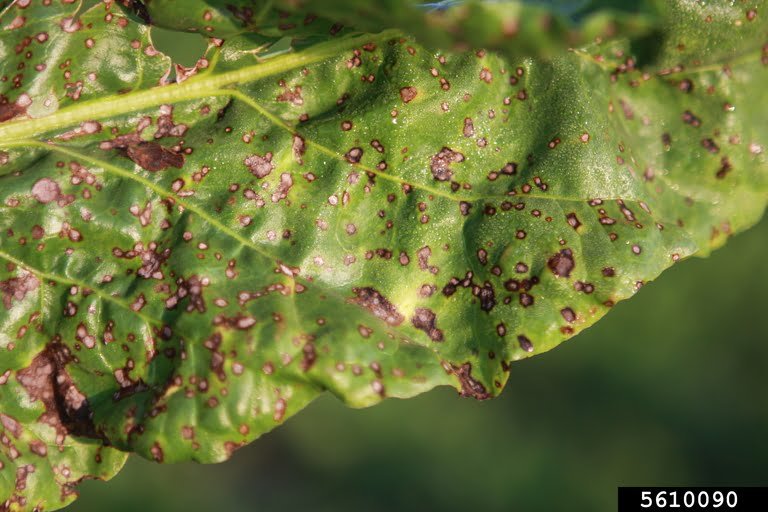
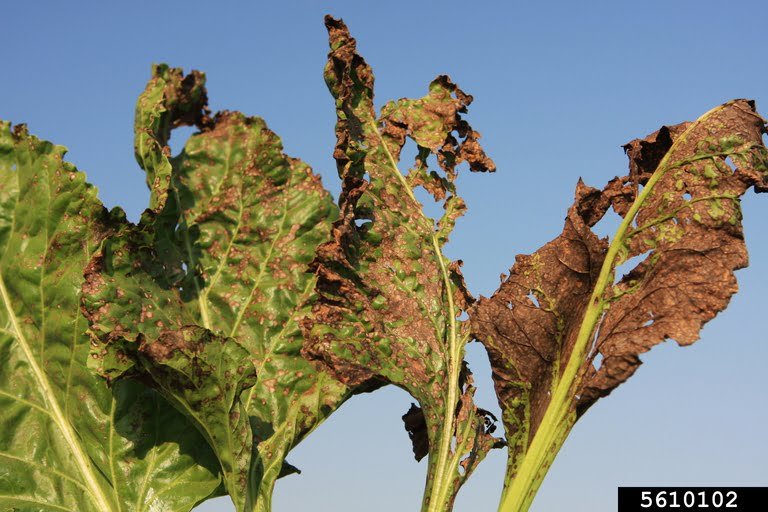
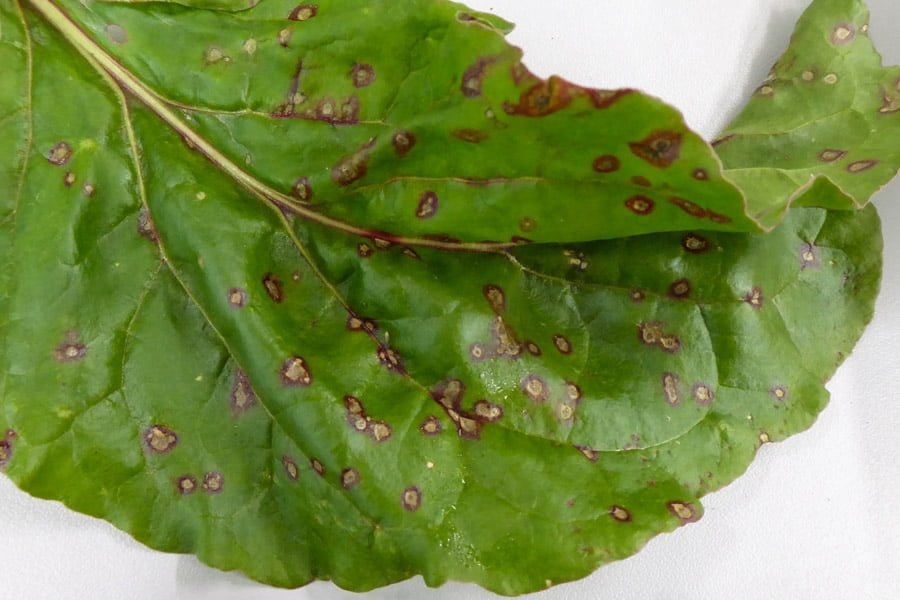
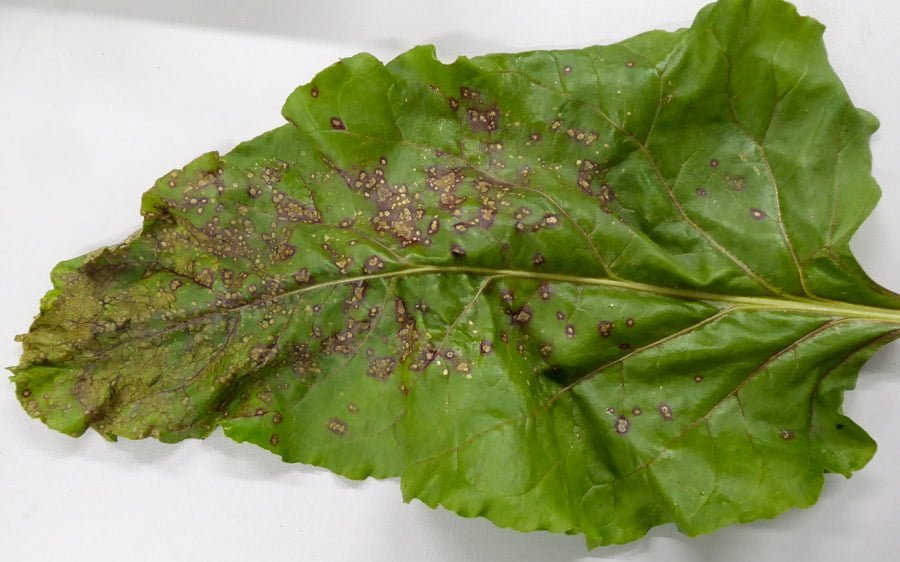
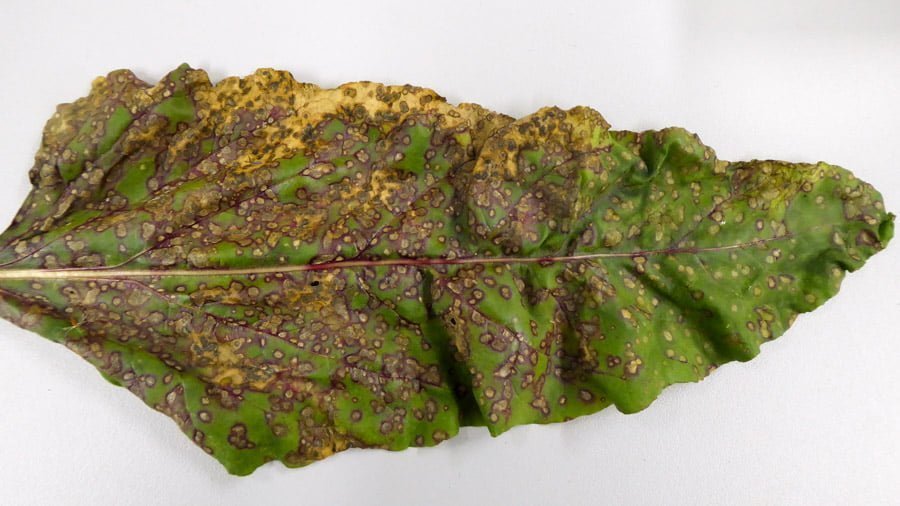
Losses of disease spread
As the disease progresses, severely affected leaves become yellow, and the spots can coalesce to form large areas of dead tissue. Severe infection causes leaves to wilt and die. The plant turns to vegetative growth to replace dead leaves instead of root growth and storing sugar.
Control strategy
- Mechanical control
- Physical control (tillage, sanitation, pruning, solarization)
- Fungicides
Preventive measures to prevent the occurrence of Cercospora on legumes
- Follow an appropriate triple agricultural cycle until the residues of the previous crop are decomposed in the soil.
- Planting healthy seeds, or superficially disinfecting the seeds with a suitable pesticide.
- Dispose of infected plant remains, and plow the soil to bury the plant remains at an appropriate depth.
- Controlling weeds that can cause disease and be a source of infection on beets.
Chemical control recommendations
Spraying the foliage of plants with copper compounds such as copper oxychloride, or using mancozeb, difenoconazole, methyl thiophanate, and carbendazim.
Anti-membership recommendations
You can use hot water treatment for seeds. You can also spray the extract (neem oil, which is also effective in reducing the severity of the disease, increasing the number of pods and grains, increasing the strength of the pods, and increasing their weight).
In conclusion, we would like to note that we, at the world of plants website, offer you all the necessary services in the world of plants, we provide all farmers and those interested in plants with three main services::-
- Artificial intelligence consulting service to help you identify diseases that affect plants and how to deal with them.
- Blog about plants, plant diseases and care of various crops ... You are currently browsing one of her articles right now.
- An application that provides agricultural consultations to clients, as well as a service for imaging diseases and knowing their treatment for free – Click to download the Android version from Google Play Store، Click to download the IOS version from the Apple App Store.
References
Cercospora leaf spot on legumes - plantix
Diseases of leguminous vegetables - PDF file
Cercospora diseases - almerja




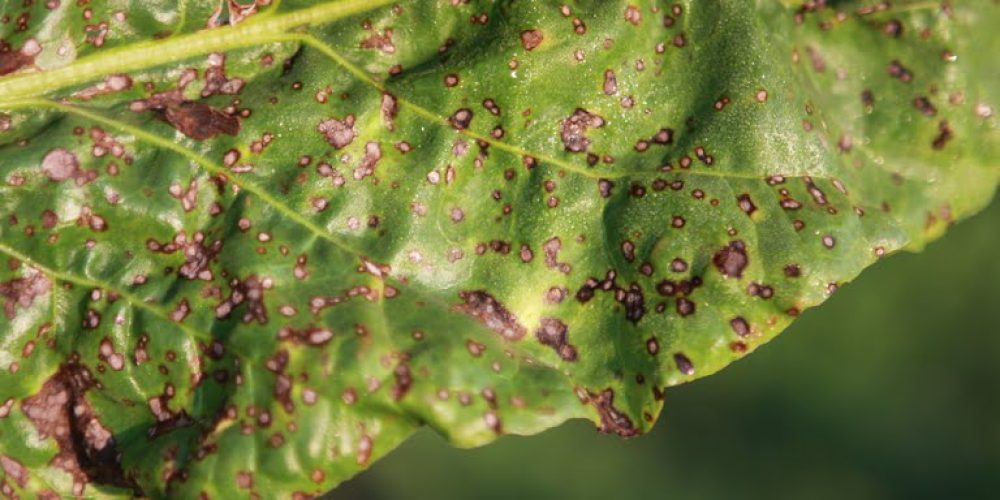
2 Comments
اود ان اعرف هل يصيب المرض اوراق اشجار البرازيلية Terminalia catappa
مرحبا بك في عالم النباتات
الآفات الزراعية التي تصيب اللوز البجلي
هذه الشجرة معرضة على الدوام للإصابة بالمرض، والآفات الزراعية، سواء كانت بكتيرية أو فطرية، ومثال تلك الأفات والأمراض ما يلي:
1 – حشرات العفص
من الأمراض البكتيرية، والتي تتمكن من الوصول للشجرة وإصابتها عن طريق الشقوق التي توجد في اللحاء.
ومن علامات هذا المرض ظهور درنات صغيرة، دورها يتلخص في حرمان الشجرة من وصول الغذاء والمياه لأعلى منطقة بها.
ومن ثم يتطور الأمر بالتدريج ليصل لبقية أجزائها، فتصبح الشجرة ضعيفة، وانتاجها يكاد لا يذكر.
2 – العث
أما هذا النوع من الآفات، فهو يصيب الأجزاء السفلية من أوراقها.
ويتسبب هذا المرض في جعل الأوراق الخضراء صفراء ذابلة، ثم تتساقط، ويقل إنتاجها.
3- الذبول الفطري
يعرف هذا المرض الفطري باسم فيرتسيليوم، وهو عندما يصيب الشجرة يتلفها.
وعلامات الإصابة تظهر في الأفرع العلوية للشجرة، ثم تمتد الإصابة لتصل إلى بقية الأجزاء.
ويعتمد هذا المرض على منع وصول الغذاء والماء للشجرة، وبعد فترة من الإصابة، وعدم الاهتمام بعلاجها، تنهار تلك الأفرع بالكامل.